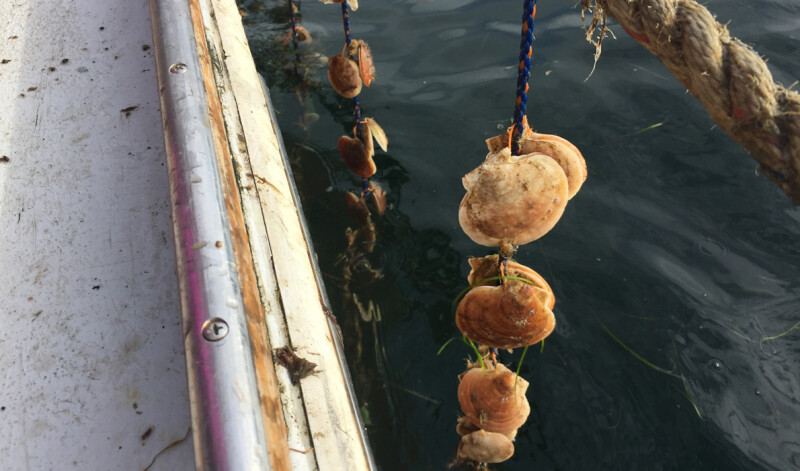A recent study from the University of Maine’s Aquaculture Research Institute and Darling Marine Center is offering Maine scallop farmers practical insights into gear selection and its impact on growth and profitability.
The research published in Aquaculture and reported by the Penobscot Bay Pilot compared two common farming methods — lantern nets and ear-hanging — across a full grow-out cycle in Penobscot Bay and Frenchman Bay.
According to Science Daily, suspended culture is the most common approach, with farmers typically using multi-tiered lantern nets to grow scallops to a harvestable size. UMaine shares that ear-hanging, a technique adapted from Japanese scallop farming, offers a potential alternative. This method involves drilling a small hole in the scallop's shell and suspending it on a line, allowing for better water flow and potentially reducing maintenance needs.
Led by UMaine postdoctoral researcher Christopher Noren, the study looked at how these two gear types influence shell size and, more importantly, adductor muscle weight- the key market driver in U.S. scallop sales. Over four years, researchers partnered with local farms to collect data that could guide decisions at the dock and on the water.
“We wanted to provide growers with data they could actually use on the water,” Nored told the Pilot. “By comparing these two methods across a full grow-out cycle, we were able to identify where the biological advantages lie and how they might translate to better yields and more efficient operations.”
The results? Scallops grown on ear-hanging lines showed a modest 1-4 percent increase in shell height, but more importantly, they delivered up to 12 percent more adductor muscle weight than their lantern net counterparts. That’s a significant gain for growers selling into a market where larger meats bring a higher price per pound.
The study also noted that ear-hanging scallops benefited more from warmer waters in the ideal growth range- between 50 and 59 degrees Fahrenheit- but were more vulnerable to slower growth in colder winter months. “These findings give scallop farmers a clearer picture of how different methods impact growth and harvest timing,” said co-author Damian Brady, a UMaine oceanography professor.
Andrew Peters, owner of Vertical Bay LLC and co-author of the study, emphasized the value of real-world results. “Understanding how small changes in gear choice impact growth and market value helps us make smarter decisions as we scale up scallop farming in Maine,” he said, as quoted in the Pilot article.
With the U.S. still importing the bulk of its scallops, this kind of research may prove key in scaling domestic production. By dialing in on gear that boosts growth while balancing maintenance demands, Maine’s scallop sector could be poised for sustainable expansion in the Gulf of Maine.







